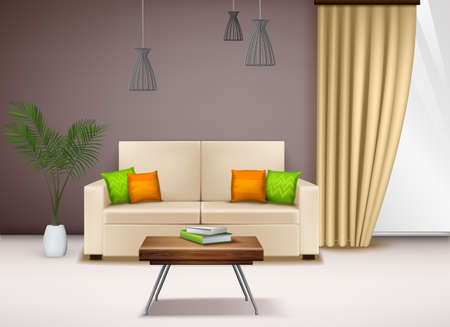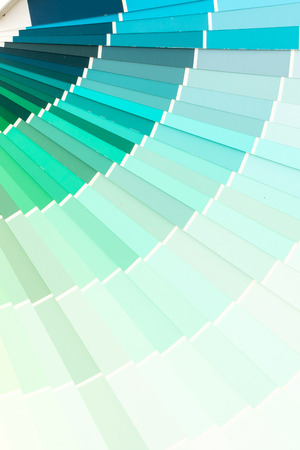Introduction: The Cultural Significance of Colour in Britain
Colour has always played a subtle yet powerful role in shaping British identity, reflecting the nation’s shifting tastes, values, and historical milestones. From the windswept coastlines of Cornwall to the bustling streets of London, hues have not only adorned Britain’s landscapes but have also become embedded in its collective memory and everyday rituals. The evolution of colour palettes in Britain is more than just a matter of aesthetics; it mirrors societal changes, technological advancements, and interactions with other cultures over centuries. Whether through the soft pastels of Regency interiors or the vibrant tones found in contemporary urban spaces, colour choices provide a lens through which we can interpret class distinctions, regional identities, and even political sentiments. In this context, exploring the historical trajectory of British colour palettes allows us to better understand how colour has both influenced and been influenced by the fabric of British life.
Medieval and Tudor Tones: From Natural Dyes to Heraldic Colours
The colour palettes of medieval and Tudor Britain were deeply shaped by the raw materials available to dyers, as well as the profound influence of heraldry and strict sumptuary laws. During this era, the selection of colours was far from arbitrary; it was a complex interplay between nature, status, and symbolism.
Natural Dyes: The Palette of the Land
Early British textiles and paints relied heavily on natural dyes sourced from local plants, minerals, and insects. This meant the spectrum of colours was inherently linked to what could be cultivated or traded. Woad produced blues, madder yielded reds, while weld provided yellows. More exotic hues like deep purples or vibrant reds were costly imports, often reserved for the upper echelons of society.
| Dye Source | Colour Produced | Common Usage |
|---|---|---|
| Woad | Blue | Clothing, wall hangings |
| Madder Root | Red | Tapestries, garments |
| Weld | Yellow | Ceremonial fabrics |
| Cochineal (imported) | Crimson | Nobility attire |
| Indigo (imported) | Deep blue | Livery, court dress |
The Symbolism of Heraldic Colours (Tinctures)
The rise of heraldry in the 12th century brought formalised use of colours—known as tinctures—to identify families and allegiances. Each tincture had symbolic meaning: gold (Or) signified generosity, silver (Argent) stood for peace, red (Gules) for warrior spirit, blue (Azure) for loyalty, green (Vert) for hope and joy, black (Sable) for constancy or grief, and purple (Purpure) denoted sovereignty. These heraldic rules not only influenced coats of arms but filtered into broader decorative arts and architecture.
Heraldic Tinctures and Their Meanings
| Tincture | Name | Symbolism |
|---|---|---|
| Or | Gold/Yellow | Generosity, elevation of the mind |
| Argent | Silver/White | Peace, sincerity |
| Gules | Red | Warrior spirit, strength |
| Azure | Blue | Loyalty, truth |
| Vert | Green | Hope, joy |
| Sable | Black | Constancy, grief |
| Pupure | Purple | Sovereignty |
The Impact of Sumptuary Laws on Colour Use
The display of certain colours became strictly regulated by sumptuary laws—statutes intended to reinforce social hierarchies by controlling access to luxury goods. Only nobility could wear specific shades such as rich purple or crimson velvet; merchants and commoners were often restricted to more subdued hues. This legal framework shaped both fashion and interiors, embedding class distinctions into the very fabric—and colour—of daily life.
Cultural Legacy
The medieval and Tudor approach to colour laid the foundation for many British colour associations still recognised today. Whether expressed through the enduring symbolism in coats of arms or subtle references in architecture and design, these early choices echo through centuries of British visual culture.

3. Georgian and Victorian Eras: Refinement, Industrialisation, and New Hues
The Georgian and Victorian periods in Britain marked a profound transformation in the nation’s colour palettes, driven by rapid technological advancement, expanded global trade, and shifting social structures. During the Georgian era, refinement and taste were paramount, with interiors and exteriors alike favouring elegant, muted tones such as sage green, stone grey, and soft blues. These choices were influenced not only by aesthetic preferences but also by the availability of pigments derived from natural minerals and plants.
The Industrial Revolution brought about seismic changes in both pigment production and accessibility. New synthetic dyes—such as mauveine and Prussian blue—became available thanks to innovations in chemistry. For the first time, brighter and more stable colours could be produced on a large scale, fundamentally altering what was possible in domestic decoration and fashion. The palette expanded dramatically, introducing bold hues previously unattainable for most households.
Trade routes extended across the British Empire, ushering in exotic pigments like Indian yellow and ultramarine, which further enriched British interiors and textiles. These new imports allowed for increased experimentation with colour schemes in both public and private spaces.
Alongside technological progress, social shifts played a significant role in shaping colour use. Colour became a marker of class distinction; the wealthy could afford the latest pigments and thus expressed their status through opulent wallpapers or richly coloured drawing rooms. In contrast, working-class homes often remained more subdued due to cost constraints and limited access to fashionable materials.
This era of refinement and industrialisation thus set the stage for a democratisation of colour that would gradually unfold. The interplay between invention, commerce, and social aspiration redefined what it meant to live—and decorate—in Britain during these transformative centuries.
4. Twentieth Century: Post-war Pragmatism to the Swinging Sixties
The trajectory of British colour palettes in the twentieth century reflects a remarkable shift in societal moods, technologies, and cultural aspirations. In the immediate aftermath of World War II, Britain faced significant material shortages and economic austerity. These constraints were mirrored in domestic interiors and fashion through muted, utilitarian shades. The palette was dominated by subdued greys, browns, olive greens, and navy blues—colours that spoke to rationing, practicality, and a sense of collective restraint.
However, as Britain gradually emerged from post-war austerity during the 1950s, there was a subtle softening of this pragmatic approach. Pastel shades—such as duck-egg blue, primrose yellow, and mint green—began to appear in kitchens and living rooms, inspired by both American influences and newfound optimism. This transitional period bridged the gap between wartime necessity and the expressive freedom that would soon define the cultural landscape.
From Grey to Groovy: Colour Palette Shifts Across Decades
| Decade | Dominant Colours | Influences |
|---|---|---|
| 1940s–Early 50s | Charcoal grey, khaki, muted navy | Rationing, utility furniture scheme, war-time pragmatism |
| Mid–Late 50s | Pale pinks, pastel greens, duck-egg blue | Optimism, American culture, increased consumer choice |
| 1960s | Lime green, tangerine orange, hot pink, black & white contrasts | Swinging London, pop art, youth culture revolution |
The Explosion of Colour: The Sixties Revolution
The “Swinging Sixties” were a watershed moment for British colour sensibility. With the rise of youth culture and pop music icons like The Beatles and The Rolling Stones, British design shed its former restraint. Interiors burst with psychedelic patterns; Carnaby Street fashion embraced bold geometric prints in acid-bright shades; even everyday objects—from buses to teapots—adopted a new visual exuberance. Colours became statements of individuality and modernity. The palette was no longer about blending in but standing out—a direct reflection of changing attitudes towards class, gender roles, and personal expression.
Legacy of Twentieth-Century Palettes
This era’s rapid evolution not only mirrored social transformation but also set the stage for how colour would be used as both a practical tool and an emotional register in subsequent decades. The journey from post-war greys to psychedelic brights is more than aesthetic; it charts the story of Britain’s resilience and reinvention.
5. Modern Influences: Globalisation, Sustainability, and British Design Today
The contemporary British colour palette is a testament to the nation’s evolving identity—a fusion of tradition, innovation, and global interconnectedness. In today’s design landscape, the influences shaping colour choice are more diverse and layered than ever before.
Multiculturalism and the Broadening Palette
Britain’s rich tapestry of cultures has significantly expanded its visual vocabulary. As communities from Asia, Africa, the Caribbean, and beyond have become integral parts of British society, their vibrant hues and motifs have subtly permeated everything from interior decor to public art installations. Designers now draw inspiration from this multicultural milieu, blending traditional British restraint—think muted greens and deep blues—with bolder tones such as saffron yellows or rich terracottas. This interplay results in palettes that celebrate diversity while retaining a uniquely British sensibility for balance and understatement.
Environmental Awareness and Sustainable Colour Choices
With growing environmental consciousness, sustainability now plays a central role in material and colour selection. Eco-friendly paints and dyes derived from natural pigments are favoured for their lower environmental impact. There is a renewed appreciation for colours drawn from nature: soft earthy browns, mossy greens, and stone greys echo Britain’s landscapes while symbolising ecological responsibility. Designers often favour timeless shades over fleeting trends, ensuring spaces remain relevant and reducing the need for frequent redecorating.
The British Approach: Tradition Meets Innovation
Despite these global influences, British design remains rooted in certain enduring principles: subtlety, wit, and an affinity for heritage. Contemporary palettes might pair heritage hues like Farrow & Ball’s ‘Railings’ or ‘Hague Blue’ with unexpected pops of international colour or recycled materials. There is also an increased use of digital technology—colour-matching apps, virtual reality previews—which empowers designers to experiment confidently while honouring local context. Ultimately, today’s British palette reflects a harmonious blend: global yet grounded, modern yet mindful of history—a living record of Britain’s ongoing dialogue with itself and the wider world.
6. Conclusion: The Enduring Impact of History on British Colour Trends
Looking back at the evolution of British colour palettes, it becomes evident that history’s imprint lingers in every shade, hue, and tonal decision made across Britain’s creative industries and domestic interiors. The nation’s relationship with colour has always been deeply entwined with its social, political, and economic narratives—whether through the subtlety of Georgian greys, the exuberance of Victorian jewel tones, or the muted nostalgia of post-war palettes. These journeys are not merely archived curiosities but living traditions that continue to shape contemporary tastes and the visual language seen throughout the UK.
Today, British designers and homeowners still draw upon historical references—sometimes consciously, often subconsciously—when selecting colours for fashion, architecture, branding, or home décor. The resurgence of heritage paint brands and the popularity of period-inspired interiors speak to a collective yearning for continuity and authenticity amidst rapid change. Even as global trends influence local preferences, there remains a distinctively British approach to colour: one rooted in restraint, practicality, and a deep appreciation for subtle shifts rather than fleeting fads.
The country’s climatic conditions, storied landscapes, and centuries-old institutions all contribute to this ongoing dialogue between past and present. From the soft sage greens reminiscent of rolling countryside to the dignified navy blues found in academic regalia, Britain’s colour stories are woven into the fabric of everyday life. This enduring interplay ensures that each new generation inherits not just a palette of colours but a rich cultural vocabulary—a way to express identity, evoke memory, and signal belonging within an ever-evolving society.
In sum, the historical journey of British colour palettes is far from over. It continues to inform trends and inspire innovation while grounding contemporary choices in tradition. By recognising and celebrating this lineage, we not only honour our visual heritage but also empower ourselves to create spaces and expressions that feel both relevant and resonant in modern Britain.


